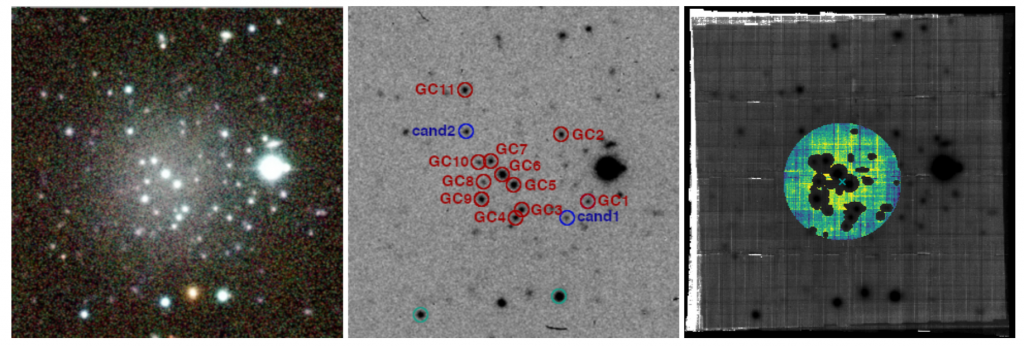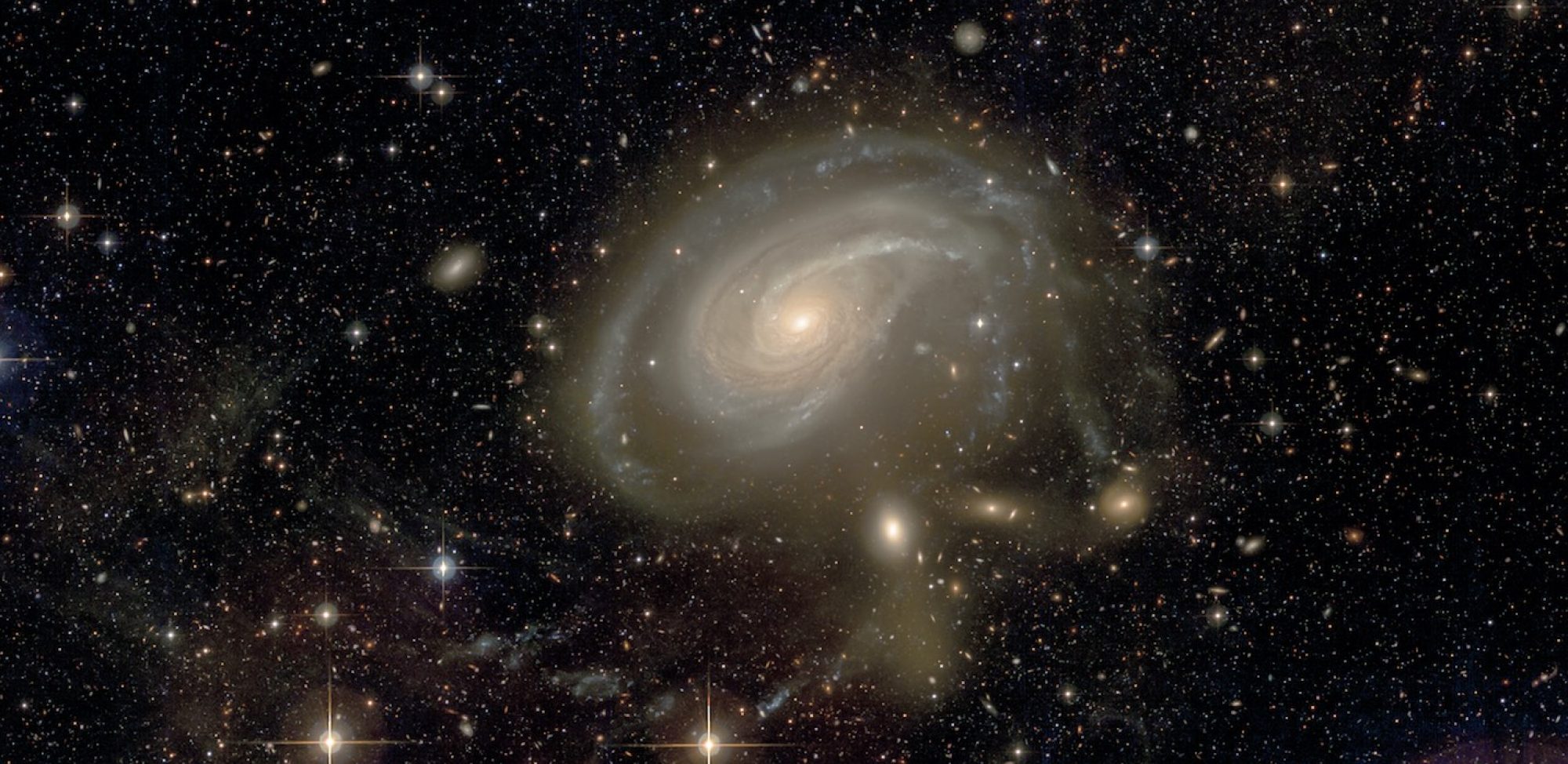
The MATLAS deep imaging survey has uncovered a plethora of dwarf galaxies in the low density environment it has mapped. A fraction of them are unusually extended and have a low-surface brightness. Among these so-called ultra-diffuse galaxies, a few seem to host an excess of globular clusters. With the integral-field unit spectrograph MUSE we have observed one of these galaxies – MATLAS J15052031+0148447 (MATLAS-2019) – located towards the nearby group NGC 5846 and measured its systemic velocity, age, and metallicity, and that of its globular clusters candidates.
For the stellar body of MATLAS-2019 we derive a metallicity of -1.33+0.19-0.01 dex and an age of 11.2+1.8-0.8 Gyr. For some of the individual GCs and the stacked GC population, we derive consistent ages and metallicities. From the 11 confirmed globular clusters and using a Markov Chain Monte Carlo approach we derived a dynamical mass-to-light ratio of 4.2+8.6-3.4M/L. This is at the lower end of the luminosity-mass scaling relation defined by the Local Group dwarf galaxies. Furthermore, we couldn’t confirm nor reject the possibility of a rotational component of the GC system. If present, this would further modify the inferred mass. Follow-up observations of the globular cluster population and of the stellar body of the galaxy are needed to assess whether this galaxy is lacking dark matter like it was suggested for the pair of dwarf galaxies in the field of NGC 1052, or if this is a miss-interpretation arising from systematic uncertainties of the method commonly used for these systems and the large uncertainties of the individual globular cluster velocities.
Müller et al., 2020, A&A 640, 106

